Epsom Salt, popularly known as magnesium sulfate, is a natural mineral that has risen to fame in gardening due to its numerous advantages. It serves as a soil conditioner to enrich plant development through a supply of much-needed nutrients such as magnesium and sulfur, which are heavily involved in photosynthesis, nutrient uptake, and general plant growth. This article highlights the different uses of Epsom Salt in gardening, showing how it can improve soil quality, nurture greenness and increase the productivity of fruits and vegetables. Applying science behind Epsom Salt’s efficacy and the correct way of introducing it into gardening will enable readers to make their gardens rich with yields.
The Role of Epsom Salt in Plant Health
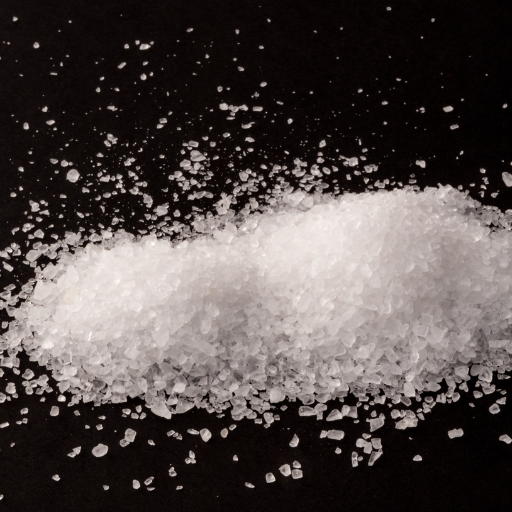
Epsom Salt has an important role in the well-being of plants because it is composed of magnesium and sulfur, which are essential nutrients for their growth. Chlorophyll production is impaired without sufficient amounts of magnesium; thus, the process of photosynthesis becomes less efficient, so the plants cannot effectively convert solar energy into fuel. The result could be chlorosis, a symptom of yellow leaves and stunted growth. Sulfur also plays a significant role in amino acid and protein synthesis processes required for plant development and growth while promoting proper enzyme functioning and enhancing its resistance to diseases. To add on, incorporating Epsom salt to soil or using it as foliar spray can help increase nutrient availability hence leading to strong and healthy plants.
Understanding the Composition of Epsom Salt
Scientifically known as Magnesium Sulphate Heptahydrate (MgSO₄ • 7H₂O), Epsom salt contains oxygen, sulfur, and magnesium. It is soluble in water at about 35.7 grams per 100 milliliters at room temperature, making it easy to apply to soils or leaves for direct absorption. This compound contains about 9.8% magnesium, which is vital in various biochemical reactions within plants, while around 13% sulfur makes up this substance, which is crucial for amino acid production and general metabolic fitness.
Magnesium sulfate consists of cations Mg2+ (magnesium) and anions SO42- (sulfate). For example, a normal rate for foliar feeding would range from one to two tablespoons per gallon of water, whereas when mixed with soil, it requires one cup per one hundred square feet of land area. These application rates are justified since they require more chlorophylls to be produced through increased photosynthetic efficiency to promote optimal plant health, which leads to higher yields when fewer Epsom salts are used. By understanding these dimensions, horticulturists can optimize the use of Epsom Salt to ensure better growth and development.
How Epsom Salt Differs from Other Fertilizers
The composition and mechanism of action distinguish Epsom salt from other commercial fertilizers. Regular fertilizers typically consist of nitrogen (N), phosphorus (P), and potassium (K) as major macronutrients, whereas magnesium and sulfur are secondary macronutrients offered by Epsom salt. This makes it unique in that it has two functions – promoting chlorophyll synthesis and aiding the uptake of nutrients through increased enzyme activities.
Compared to other magnesium sources like dolomite lime, Epsom salt contains more bioavailable magnesium because it is soluble. It dissolves quickly; thus, plants can take up nutrients right away, especially under soil conditions where magnesium is deficient. The typical solubility of Epsom Salt is approximately 35.7g per 100 mL water, which is significantly higher than less soluble sources.
Moreover, salt application does not disturb the C/N ratio unlike other nitrogenous fertilizers, which may lead to an unbalanced soil profile over time after repeated use. The normal rate for foliar application is given as 1-2 tablespoons per gallon or one cup per one hundred square feet for soil amendments based on improved flowering in tomatoes and faster-growing crops, respectively, due to enhanced plant health metrics observed. In summary, all those technical parameters emphasize how good this supplementary nutritional source works alongside traditional ones in assisting plants’ overall condition making it a great support system for general plant health issues
Various Nutrients Found in Epsom Salt
The most important minerals provided by Epsom Salt are sulfur and magnesium. Magnesium is needed for chlorophyll production, enabling photosynthesis and being an essential element for enzymes, which are necessary to several biochemical processes in the plant. Sulfur, on the other hand, is an important constituent of some proteins and amino acids contributing to overall well-being and growth of plants. With their help, the root system develops better, nutrients are absorbed more easily while yields improve in different types of crops that can be grown. Moreover, both magnesium and sulfur help to alleviate different deficiencies that can retard their development with respect to plant life, making it highly pertinent as an inclusion into agricultural practices like Epsom salt.
Best Practices for Applying Epsom Salt in the Garden

- Timing: Use Epsom salt during some key growth stages, for example, during early spring before planting or towards the beginning of flowering. During this time, the nutrients are better utilized by plants.
- Application Method: For foliar feeding, dissolve 1 to 2 tablespoons of Epsom Salt in a gallon of water and spray directly onto leaves in the morning or late afternoon to prevent leaf burn. For soil application, mix 1 cup of Epsom Salt per 100 square feet into the soil before planting or as a side dressing for established plants.
- Frequency: To avoid overloading the soil with magnesium and upsetting other nutrient balances limit once every four to six weeks.
- Compatibility: However, it should be used by doing soil tests along with which, if any, nutrients are lacking, making sure that there is a balance in plant nutrition.
- Observation: Monitor plant responses to Epsom Salt application closely, adjusting rates and frequency as needed based on observable growth and health indicators in crops.
How to Determine the Right Amount of Epsom Salt
To determine the right amount of Epsom Salt for your garden, first conduct a soil test to evaluate existing nutrient levels and pH balance. Most guidelines recommend applying 1 to 2 tablespoons per plant as a foliar spray or 1 cup per 100 square feet when mixing into the soil. Consult agronomic research or extension services for specific crops for tailored recommendations, as different plants have varying nutrient requirements. Additionally, track plant health and growth after application, adjusting amounts based on visible responses and overall crop performance such that magnesium levels are suitable without causing nutrient imbalances. Regular monitoring through periodic soil testing will give you more accurate guidance in applying Epsom salt correctly in horticultural practices
Methods for Application: Soil vs. Foliar Sprays
Either of the two main methods—soil incorporation or foliar sprays—is suitable for different horticultural objectives and should be selected accordingly when considering applying Epsom Salt.
Soil application involves mixing Epsom Salt directly into the soil, which allows for gradual absorption by root systems. The typical recommendation is 1 cup of Epsom Salt per 100 square feet, particularly beneficial for plants suffering from magnesium deficiency. This method promotes long-term nutrient availability and is effective for a wide range of crops as it ensures even distribution.
On the other hand, foliar applications entail dissolving Epsom Salt in water before spraying it on leaves. By doing so, the foliage absorbs the mineral rapidly to meet immediate magnesium needs. A common dilution ratio is 1 to 2 tablespoons of Epsom Salt per gallon of water. Uptake can be influenced by factors such as temperature and humidity, although optimum results are often recorded during cooler parts of the day.
Both methods require careful monitoring of plant responses. Soil applications need to be tracked through periodic soil tests, while foliar sprays may be assessed by observation of leaf color and overall plant health. This will ensure that the use is effective through adjustments based on empirical evidence from these observations or those findings from relevant agronomic research related to various horticultural situations
Best Times to Apply Your Applications
How you time your Epsom Salt applications is vital for their maximum efficacy and best plant health. One should apply it during the early morning and late afternoon, when it is cooler and there’s usually more humidity. This timing minimizes rapid evaporation hazards while increasing absorption rates through soil or foliage.
Applying Epsom Salt to the soil just before or during the growth stages of plants in the spring ensures magnesium is available when most needed by plants. In the case of foliar sprays, this process can give immediate relief from magnesium deficiency, especially in times of active growth for plants or stress conditions such as droughts. Checking the weather forecast would also be good as raining makes it easier for Epsom salt to dissolve into soil hence making it more accessible by plant roots.
In summary, a strategic approach that considers these timings will result in better use of Epsom Salt, enabling plants to get enough nutrients required for vigorous growth and development.
Epsom Salt for Specific Types of Plants
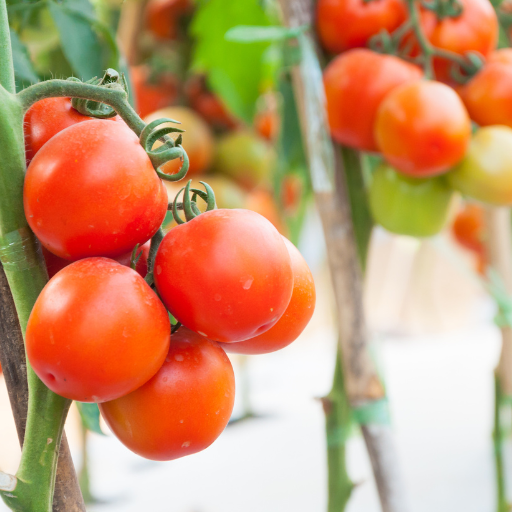
For a range of specific plant types with magnesium deficiency or need for extra macro and micronutrients to achieve best growth, Epsom Salt can be useful. Tomatoes, for example, benefit greatly from Epsom salt use because it increases the production of fruits as well as enhances the taste of tomatoes. Similarly, roses show better bloom and color intensity when given magnesium; hence, they are usually advised to be sprayed during their active growing season using Epsom salt foliar spray. Moreover, peppers, especially bell peppers and blossom-end rot, also increase their yield when treated with Epsom salt. In all cases, a diluted solution of Epsom salts—usually one tablespoon in one gallon of water—is administered bi-weekly during the growing season to correct deficiencies and generally promote health in these specific crops, thereby leading to strong growth accompanied by improved flowering or fruiting.
Increasing Tomato Yield and Flavor
There are several strategic practices that will help you increase tomato yield and flavor. First, maintaining uniform soil moisture is important since enough water prevents plant stresses which would otherwise lower fruit quality. Secondly, applying organic manure rich in nitrogen encourages vigorous leafing thus supporting fruit development. Furthermore introducing Epsom salts into the fertilizer mix increases magnesium levels for better photosynthesis and nutrient absorption. This helps improve air flow while ensuring that more energy is directed into developing fruits by pruning off unnecessary leaves Lastly selecting appropriate varieties based on local growing conditions along with conserving soil moisture with mulching may result in a higher crop yield per unit area as well as a tastier harvest overall Additionally it is important to regularly monitor pests and diseases throughout the growing season in order to maintain healthy plants.
Enhancing the Vibrancy of Ornamental Plants
Enhancing the vibrancy or ornamentals’ coloration demands proper nutrient management coupled with an optimum light environment among other factors like environmental conditionings. Firstly, fertilization using slow-release balanced-type fertilizers specializing in ornamental plants is helpful in boosting their coloration and growth. Secondly, these plants should be given enough light, either natural or supplemental, because inadequate light may lead to leggy growth and faded colors.
Moreover, maintaining appropriate humidity levels for each species of plant, as well as checking them regularly for pests and diseases, helps reduce stress on the plant, thus promoting vibrant foliage and blooms. Others include carrying out regular pruning as well as deadheading which stimulates new growth in addition to enhancing overall plant appearance so that a gardener can present an abundant display all through the season. There are also foliar sprays with micronutrients to enhance not only health but also intense leaf and flower colors in ornamental crops, making them more decorative.
Improving the Health of Lawns and Turfgrass
Improving lawns and turfgrass health requires a multifaceted approach involving proper soil management, irrigation, pest control, etc. Aerating soils improves root penetration, thereby allowing effective nutrient and water uptake, which is critical for strong grass growth. In addition, applying a balanced fertilizer based on a specific grass species will provide necessary nutrients that support luxurious lawn cover.
Additionally, it is important to water the plants regularly and deeply so that the roots can grow more profound into the soil and avoid chances of a runoff on its surface as well as waterlogging. It is also important for pest control measures to be put in place; routine checks must be done including use of integrated pest management (IPM) strategies to minimize damage by invasive species. Furthermore, maintaining the grass at an appropriate height for mowing will reduce stress while promoting thick carpet-like growth hence a more robust turf in better condition. Consequently, regular overseeding could help increase density on turf and prevent weed infestation thereby making a lawn system flourish.
Addressing Common Myths and Misconceptions
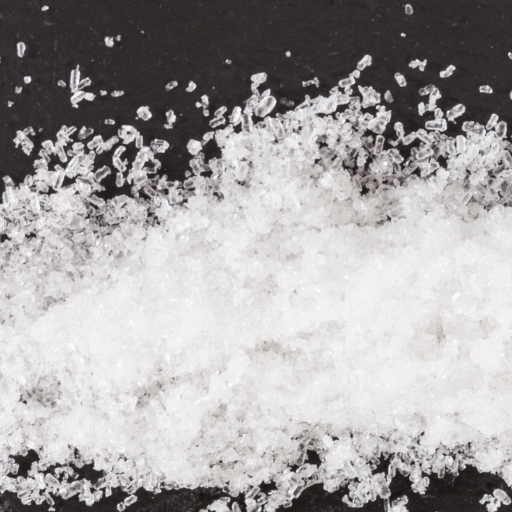
Several common myths and misconceptions about lawn care and turf management need to be addressed. One of the prevailing myths suggests that for optimal growth, a lawn has to be watered daily. However, deep and infrequent watering encourages deeper root development, which is more beneficial in the long run. Another false notion is that cutting grass ultra short will reduce maintenance; conversely, maintaining an appropriate mowing height for the specific grass type is essential for health and toughness promotion. Moreover, not all weeds are bad for lawns as some weeds indicate underlying soil problems. Knowing these misconceptions can help in better management practices resulting in healthier lawns and turfgrass.
Is Epsom Salt Really Beneficial to Plant Growth?
From my research on the use of Epsom salt to improve plant growth I found out that there was agreement among reliable sources that magnesium and sulfate – components present in Epsom salt could indeed be key players in plant health. Magnesium forms a central atom in chlorophyll, making it crucial for photosynthesis, while sulfate helps form amino acids and proteins, among other things. However, such responses are directed by existing nutrient levels of soils where Epsom salt may not have similar universal results; thereby warranting a soil test before adding magnesium or sulfur into my nutrient regimen using Epsom salts as a cure-all solution. When properly applied, this element can increase growth rates particularly among Mg-sensitive crops such as tomatoes and peppers. Ultimately, although Epsom salts can bring good tidings with them they should never replace but rather supplement an overall soil health program.
Understanding when not to use epsom salt
Firstly, if my soil test shows a sufficient amount of magnesium, application of Epsom salts may not be necessary because it may cause nutrient imbalances. This might help, though, since optimum soil magnesium levels are around 50 to 100 ppm for sufficient plant health, going beyond this point could hinder calcium uptake. Furthermore, certain plants, like many annual flowers that grow well in high-nutrient environments, may experience salt stress when exposed to additional amounts of magnesium. Therefore, I should also consider the plant’s specific nutrient requirements and soil conditions before application. Finally, over–applying Epsom salts can cause an excess buildup of sulfate, which can affect the pH of the soil and change mineral availability; consequently, it is vital to watch out for rates and effects on different soils while applying them.
The Dangers of Excessive Use of Salt
I gathered enough proof to support my claim concerning the negative effects of Epsom salt overuse on plant health; henceforth, this may lead to a harmful effect on them. Excess applications often result in high sulfates within soils which may have some effect upon pH levels. Most plants require an optimal soil pH between 6.0 and 7.5 for proper nutrient uptake or else they will have iron and phosphorous deficiencies as a result of such deviations from this range. Moreover, the excessive use of build-up in magnesium can disturb the uptake of calcium, particularly in crops such as tomatoes and pepper plants, due to their need for balanced nutrient categories. The correct proportion of calcium to magnesium should be about 7:1 so that growth can be at its best. Finally, even though most plant species exhibit signs of salt stress including leaf burn or stunting when excess Mg is available, the researcher highlights certain salt-sensitive ones like those adapted to low nutrient soils since they are likely to show symptoms of salt toxicity such as leaf-burns and dwarfism when exposed to surplus magnesium resulting from the excessive use which indicates the significance of considering carefully both soil content and plants’ needs prior applying Epsom salt into it.
Troubleshooting Plant Issues with Epsom Salt
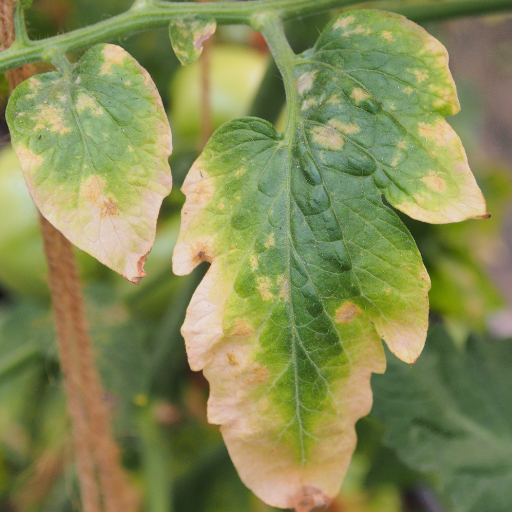
When troubleshooting regarding Epsom salt usage on plants, it is vital to look at the specific symptoms and possible causes of plant suffering. First, investigate whether the problem is caused by nutrient deficiency or over dosage. Yellowing leaves may signal magnesium deficiency which can usually be addressed through applying the right quantity of Epsom salts. However, if leaf burn or browning occurs, then this might mean excessive use, resulting in excess magnesium that adversely affects nutrient uptake.
To address these problems, check your soil’s pH and nutrient levels using a soils test kit; most plants prefer an optimal range towards the middle of 6.0 to 7.5. If there is a shortage of any of these elements, controlled application of Epsom salts that are diluted in water (typically 1-2 tablespoons per gallon) will prove effective. In contrast, stopping application of Epsom salts while concentrating on balanced fertilizer solutions can help rebalance nutrients in case over-application is suspected. Always carefully observe how plants respond to treatment and adjust further applications based on improvement or deterioration in health.
Symptoms Of Magnesium Deficiency In Plants
- Yellowing Leaves (Chlorosis): The yellowing of leaves, especially older ones, because magnesium moves around within the plant, is one common symptom associated with a lack of magnesium deficiency in plants. This yellowing normally starts between veins leaving the veins themselves darker green.
- Interveinal Chlorosis: As this shortage progresses, this yellowing can become highly noticeable, creating a stark contrast between the yellow leaf tissue and the green venation around it, which indicates that Mg levels are also low.
- Leaf Curling: Affected plants may also exhibit curling or cupping of their leaves, mainly in young growth forms, which may cause distorted foliage and slow overall development.
- Poor Fruit Development: Fruiting plants grown without enough magnesium will produce smaller, less desirable fruits. These could be smaller, and yield is likely to decline, as will overall productivity.
- Abnormal Leaf Drop: To conserve resources, magnesium-deficient plants may undergo premature leaf fall, which can lead to a substantial reduction in the plant’s total foliage, making it even weaker.
- Stunted Growth: The most critical symptom of low Mg levels is decreased growth or dwarfing. This includes plants that fail to achieve their expected height and produce fewer leaves, which points toward a general nutrient uptake malaise.
How to Correct Sulfur Deficiency with Epsom Salt
- Soil Test: Prior to application, check the soil for sulfur confirmation and identify specific nutrient needs. This enables accurate diagnosis and supports effective intervention measures.
- Application Method: Epsom salt can be applied to soil or leaves via soil application or foliar spray. For soil application, dissolve 1-2 tablespoons of Epsom salts in a gallon of water and pour it all around the plant onto the ground. For foliar spraying, mix one tablespoonful of Epsom salt into a gallon of water and spray on leaves, preferably early morning or late afternoon, so that evaporation is minimized and absorption is increased.
- Frequency of Application: Repeat this treatment every 4-6 weeks as necessary, monitoring plant response closely over time. This helps address deficiencies gradually hence guarantees healthy growth and development.
- Nutrient Synergy: Keep in mind that sulfur plays a role in multiple biochemical processes, including protein synthesis. Combining the use of Epsom salt with proper nitrogen sources improves overall nutrient absorption too.”
Knowing that Epsom Salt Is Not Always the Answer
Situations may arise when you realize that Epsom salt may not work.
- Multiple Mineral Disorders: If a plant is affected by a variety of mineral deficiencies, such as unbalanced nitrogen, phosphorus, or potassium intake, it is improper to rely solely on Epsom salts to overcome them. Rather than addressing these singularly, one must, therefore, establish an inclusive soil mutation program.
- Soil pH problems: Fertilizer nutrients might be unavailable if the soil pH level gets outside the normal range (usually 6.0-7.0 for most plants), which would make Epsom salts useless. For optimum nutrient uptake, the soil needs to be tested and its pH adjusted accordingly.
- Bugs and Diseases: Symptoms resembling those of nutrient deficiencies could actually result from pests and diseases as well. Hence, before trying any nutritional remedy such as Epsom salt; it is quite important to identify the real problem behind such signs.
Thus, through a consideration of these factors farmers prefer either use of Epsom salt or forgo it in favor of other alternatives aimed at ensuring plant wellness effectively.
Long-Term Impact of Epsom Salt Use in the Garden
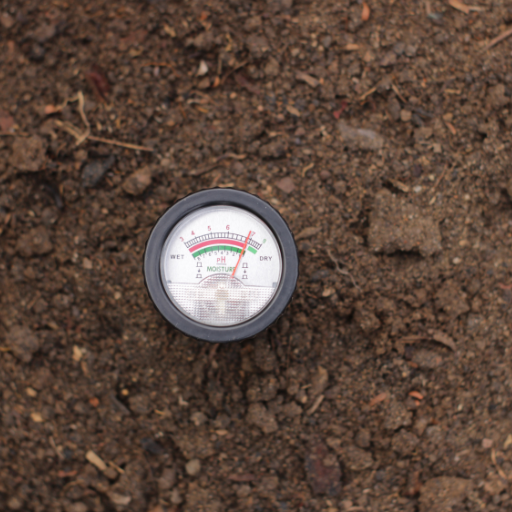
This is a matter of a long-term application of Epsom salt to the garden that can bring about both advantages and disadvantages. The regular use of magnesium and sulfur through Epsom salt can increase overall plant growth, improve flowering and fruiting processes, and increase seed germination rates. This is especially crucial for magnesium-demanding crops such as tomatoes, peppers, and roses.
However, if done excessively and continuously without soil testing, this may result in soil salinity build-up leading to nutrient imbalances and reduced plant health. Moreover, relying heavily on Epsom salt might simply mask the underlying soil health problems instead of addressing them; hence, it risks long-term sustainability concerns. As a good practice to maintain good quality soil over time without compromising on its fertility or killing plants from their roots one should consider using Epsom salt alongside other organic substances like fertilizers that are specific to different crop types together with an integrated soil management plan Regularly testing the soils will help to establish accurate levels of Magnesium which will guide inefficient use of nitrogen salts.
What Does Epsom Salt Do To Soil All Through Its Utilization?
The presence of magnesium sulfate within it means that Epsom salt has significant implications for soil health over time. When incorporated into the ground, magnesium becomes helpful in chlorophyll synthesis and enzyme activation; thus increasing photosynthetic efficiency in plants. Improved photosynthesis leads to overall healthy plant life. However, continuous usage of Epsom salts might lead to an increased risk of salinity development within soils particularly due to poor drainage in some regions. High salt content alters osmotic balance within the soil, making it hard for plants to take up water along with essential nutrients. It also contains trace amounts of sodium ions as well as chloride ions that, if not properly managed, may cause toxic accumulation over time despite their low content in an average batch since they are constantly being introduced into soils (Epsom Salt Council). Therefore, while Epsom salt can provide short-term benefits, its long-term application should be judiciously managed, using soil testing to monitor nutrient levels and ensure a balanced nutrient profile. This approach is holistic in nature and includes the use of Epsom salt alongside organic amendments, among others, for good soil health, which is essential for sustainable farming.
What Are The Environmental Implications Of Epsom Salt Usage?
Even though there are positive effects on the soil from using Epsom salt, it has some environmental concerns that need to be considered in detail. Runoff issues arise when magnesium sulfate is applied into the soil mainly in agricultural areas. Overdosing may lead to contamination of local water bodies promoting algal blooms that disrupt other aquatic ecosystems. Moreover, leaching poses questions regarding the increased accumulation of magnesium and sulfates over time within groundwater systems. In addition, sourcing of Epsom salts, mainly mined from mineral deposits can bring about conservation issues such as habitat destruction besides resource depletion related to mining activities. Thus, best management practices must be incorporated into their use so as to reduce water quality impacts and ensure they remain sustainable. It is also important to carry out regular analysis of both soil and water qualities while sticking onto recommended rates for application so as not lose care about our environment when employing wisely this type of fertilizer within agriculture or horticulture sectors.
Balancing Epsom Salt with Other Soil Amendments
For balancing Epsom salt with other soil amendments, it is important to understand nutrient interactions and soil chemistry. According to research, Epsom salt mainly provides magnesium and sulfate, which are vital for plant health, but should be supplemented by other macronutrients like nitrogen (N), phosphorus (P), and potassium (K) so as to have a complete nutrient profile. The typical NPK ratios differ accordingly depending on the species of plants and stages of their growth; 10-10-10 common formulas for general applications or flowering plants are often known to be 5-10-5.
Adding organic matter such as compost or well-rotted manure enhances soil structure while increasing microbial activity at the same time boosting overall nutrient availability. A balanced approach would involve starting with about 1 tablespoon of Epsom salt per foot of soil depth in addition to regular soil testing results that help ascertain specific nutritional shortages or overloads. For example, if tests reveal high potassium levels, an alternative source may be needed, like dolomitic lime, which also contains calcium.
Moreover, for accuracy purposes in applying amendments, it’s advisable to use standardized recommendations such as those found in local agricultural extensions or universities’ soil nutrient guidelines, which usually propose tailor-made changes based on soil type, crop needs, and regional climatic conditions. In practice, however, a concurrent application of Epsom salts together with some other additives should be kept under constant checks while adjusting them whenever there is any response observed from the plants being grown coupled with ongoing analysis of soils that shall ensure optimum growing conditions while minimizing potential environmental damage.
Reference sources
-
Sea Salt
- Source: Sea Salt
- Summary: For potted plants, dissolve two tablespoons of Epsom salt per gallon of water and substitute this solution for normal watering once a month.
-
Gardening Know How
- Source: Gardening Know How
- Summary: Most plants can be misted with a solution of 2 tablespoons of Epsom salt per gallon of water once a month. For more frequent watering, use a more diluted solution.
-
Martha Stewart
- Source: Martha Stewart
- Summary: Dissolve 1 tablespoon of Epsom salt in 1 gallon of water and apply the solution once a month during the growing season to promote healthier plants and flowers.
Frequently Asked Questions (FAQs)
Q: Can I use Epsom salt on all types of plants?
A: While Epsom salt can benefit many plants, it’s important to understand the specific needs of each plant type. Some may not require additional magnesium, so use it selectively.
Q: How do I know if my plants need Epsom salt?
A: Look for signs of magnesium deficiency, such as yellowing leaves or poor fruit production. Soil testing can also help determine if your plants need additional magnesium.
Q: Can I mix Epsom salt with other fertilizers?
A: Yes, but be cautious. Over-fertilizing can harm your plants. Always follow guidelines for both Epsom salt and the fertilizers you’re using.
Q: How often should I apply Epsom salt to my garden?
A: The frequency depends on the plant type and soil condition. Generally, applying Epsom salt once a month during the growing season is sufficient.
Q: Is it possible to overuse Epsom salt on plants?
A: Yes, overuse can lead to an imbalance of nutrients in the soil, which can harm your plants. Always apply the recommended amount.
Q: Can Epsom salt improve the flavor of my vegetables?
A: Yes, Epsom salt can enhance the flavor of vegetables like tomatoes and peppers by improving nutrient absorption, particularly magnesium.
Q: Is Epsom salt safe for organic gardening?
A: Epsom salt is generally safe for organic gardening as it is a natural mineral. However, use it in moderation to avoid disrupting soil balance.
Q: What is the best method to apply Epsom salt to my plants?
A: The best method depends on the plant type. Foliar sprays are effective for quick absorption, while soil drenches are good for long-term nutrient supply.
Q: Can Epsom salt help my plants grow faster?
A: Epsom salt can promote healthier growth by supplying essential nutrients, but it won’t necessarily speed up growth. Healthy growth depends on various factors including soil quality, water, and sunlight.
Q: What are the environmental impacts of using Epsom salt in the garden?
A: Epsom salt is generally safe for the environment when used in moderation, but excessive use can lead to nutrient runoff and soil imbalances. Sustainable practices are recommended.






